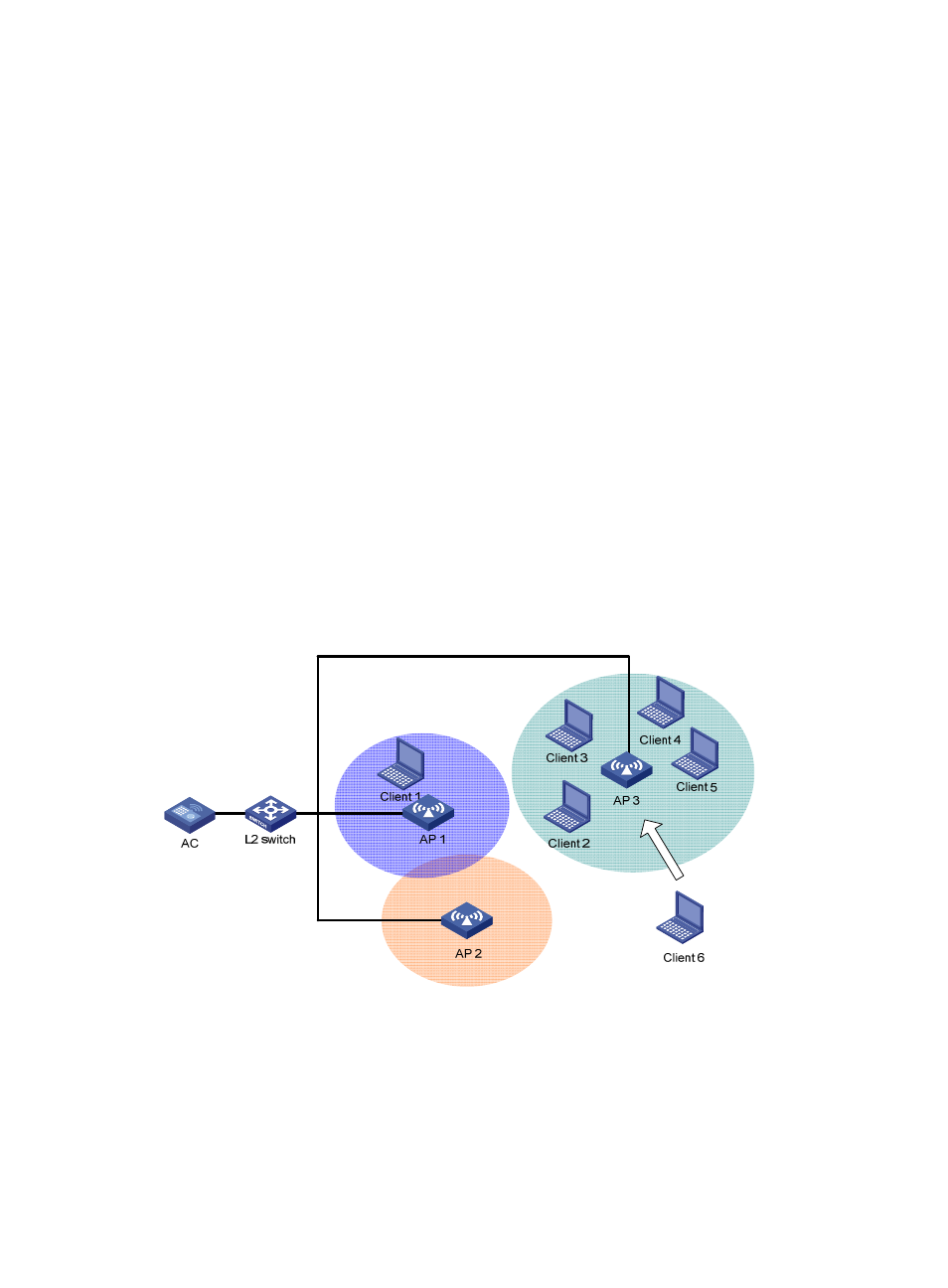Continuous transmitting mode, Channel busy test, Wlan load balancing – H3C Technologies H3C WX3000E Series Wireless Switches User Manual
Page 578: Requirement of wlan load-balancing implementation, Load-balancing modes

562
Continuous transmitting mode
The continuous transmitting mode is used for test only. Do not use the function unless necessary.
Channel busy test
The channel busy test is a tool to test how busy a channel is. It tests channels supported by the
country/region code one by one, and provides a busy rate for each channel. This avoids the situation
that some channels are heavily loaded and some are idle.
During a channel busy test, APs do not provide any WLAN services. All the connected clients are
disconnected and WLAN packets are discarded.
WLAN load balancing
WLAN load balancing dynamically adjusts loads among APs to ensure adequate bandwidth for clients.
It is mainly used in high-density WLAN networks.
Requirement of WLAN load-balancing implementation
As shown in
, Client 6 wants to associate with AP 3. AP 3 has reached its maximum load, so
it rejects the association request. Then, Client 6 tries to associate with AP 1 or AP 2, but it cannot receive
signals from these two APs, so it has to resend an association request to AP 3.
Therefore, to implement load-balancing, the APs must be managed by the same AC, and the clients can
find the APs.
Figure 593 Requirement of WLAN load-balancing implementation
Load-balancing modes
The AC supports two load balancing modes, session mode and traffic mode.
•
Session mode load-balancing
Session-mode load balancing is based on the number of clients associated with the AP/radio.
As shown in
, Client 1 is associated with AP 1, and Client 2 through Client 6 are
associated with AP 2. The AC has session-mode load balancing configured: the maximum number